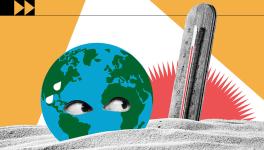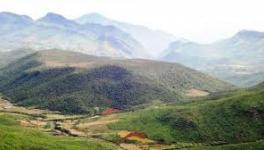Resilience of Amazon Rainforest Fast Declining, New Satellite Data Suggests
On the one hand, the anthropogenic contribution to climate change is unabated despite rounds and rounds of international discussions proposing mitigation measures. On the other hand, newer facts and observations are pouring in, manifesting the danger of the man-made change in global climatic conditions. Climate change is fast reaching the tipping point in many aspects, which means that even if strict measures are undertaken globally to mitigate the climate, there cannot be going back to the earlier stage.
One such tipping point could be the Amazon rainforest, a vital area from the climatic point of view. Bolstering the irreversible damages caused to the Amazon rainforest by human activities, the latest analysis published in Nature Climate Change on March 7 suggests that the rainforest is losing its resilience to recover from conditions like droughts or wildfires. This indicates that the vital rainforest could dieback. The analysis was based on satellite data of changes in vegetation and productivity with the application of advanced statistical tools.
Niklas Boers Niklas Boers belonging to the Potsdam Institute for Climate Impact Research and the Technical University of Munich, Germany, who led the study jointly with researchers from the University of Exeter, UK, while explaining the facts commented that “Reduced resilience, or the ability to recover from perturbations like droughts or fires -- can mean an increased risk of dieback of the Amazon rainforest. That we see such a resilience loss in observations is worrying. The Amazon rainforest is home to a unique host of biodiversity, strongly influences rainfall all over South America by its enormous evapotranspiration, and stores huge amounts of carbon that could be released as greenhouse gases in the case of even partial partiality dieback, in turn contributing to further global warming. This is why the rainforest is of global relevance.”
The Amazon rainforest is considered an essential factor in the Earth system, a potential tipping point. Previous studies have also suggested its vulnerability in the face of reckless human activities. However, how the rainforest will manifest in the future is not known correctly yet, and previous studies have shown a range of results regarding the future of this critical ecosystem. It is essential to look at specific aspects of the threat to the ecosystem and its reaction to those. Niklas Boers explained this, saying: “Computer simulation studies of its future yield quite a range of results. Therefore, we've been looking into specific observational data for signs of resilience changes during the last decades. We see continuously decreasing rainforest resilience since the early 2000s, but we cannot tell when a potential transition from rainforest to savanna might happen. When it is observable, it would likely be too late to stop it.”
The present research is a part of the ongoing project ‘Tipping Points in the Earth System’ funded by the Horizon 2020 programme of the European Union.
The researchers used stability indicators previously used in the studies on Greenland ice sheets and the Atlantic overturning circulation. The stability indicators are statistical parameters that aim to predict the approach a system takes towards abrupt changes meted out to it. The team used two satellite data sets that represent the biomass and greenness of the forest. The analysis revealed critical slowing down, which can be visualised as a weakening of the restoring forces that can bring the system back to equilibrium after abrupt perturbations occur.
The new study does not limit itself to taking the mean values only for the analyses, sometimes misleading. “While a system might seem stable if one is considering only its mean state, taking a closer look at the data with innovative statistical methods can reveal resilience loss. Previous studies based on computer simulations indicated that large parts of the Amazon could be committed to dieback before showing a big change in the mean state. Our observational analysis now shows that in many areas, destabilisation indeed seems to be underway already,” commented Chris Boulton from the University of Exeter's Global Systems Institute.
The researchers also looked into the relation of rainfall in a given area in the Amazon and found three drought events that were rare, happening once in a century. The drier areas are at an increased risk than the wetter ones. “This is alarming, as the IPCC models project an overall drying of the Amazon region in response to anthropogenic global warming,” said Niklas Boers. The data also suggested that areas closer to human settlements are more threatened.
“The study confirms that strongly limiting the logging, but also limiting global greenhouse gas emissions, is necessary to safeguard the Amazon,” said Timothy Lenton, a co-author of the study.
Get the latest reports & analysis with people's perspective on Protests, movements & deep analytical videos, discussions of the current affairs in your Telegram app. Subscribe to NewsClick's Telegram channel & get Real-Time updates on stories, as they get published on our website.























